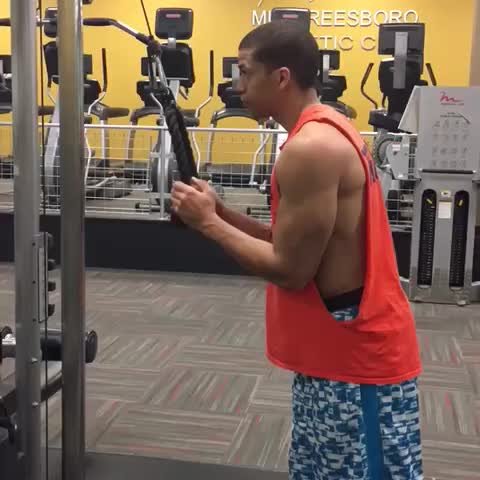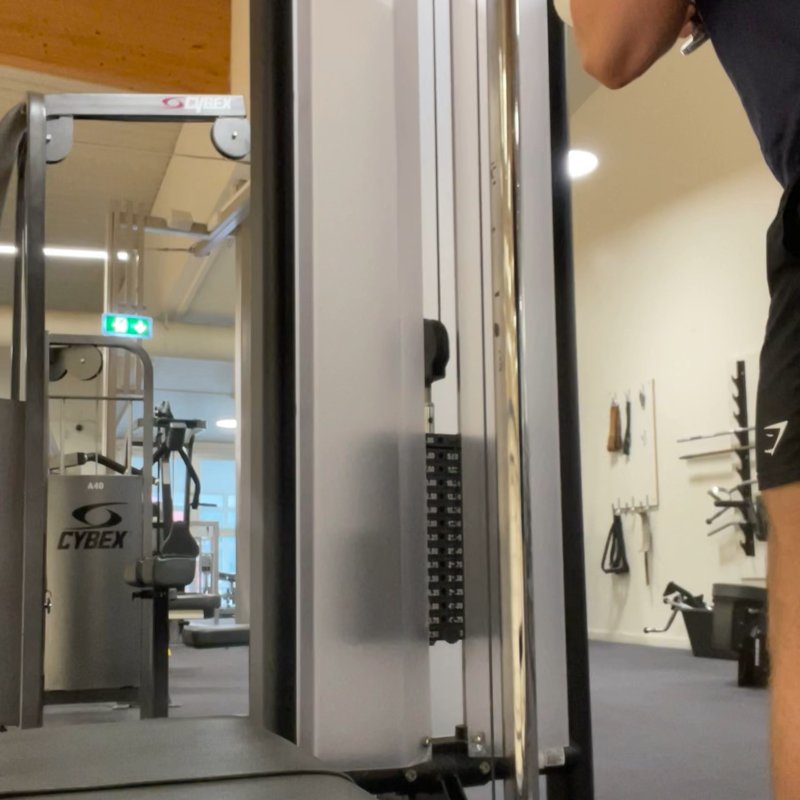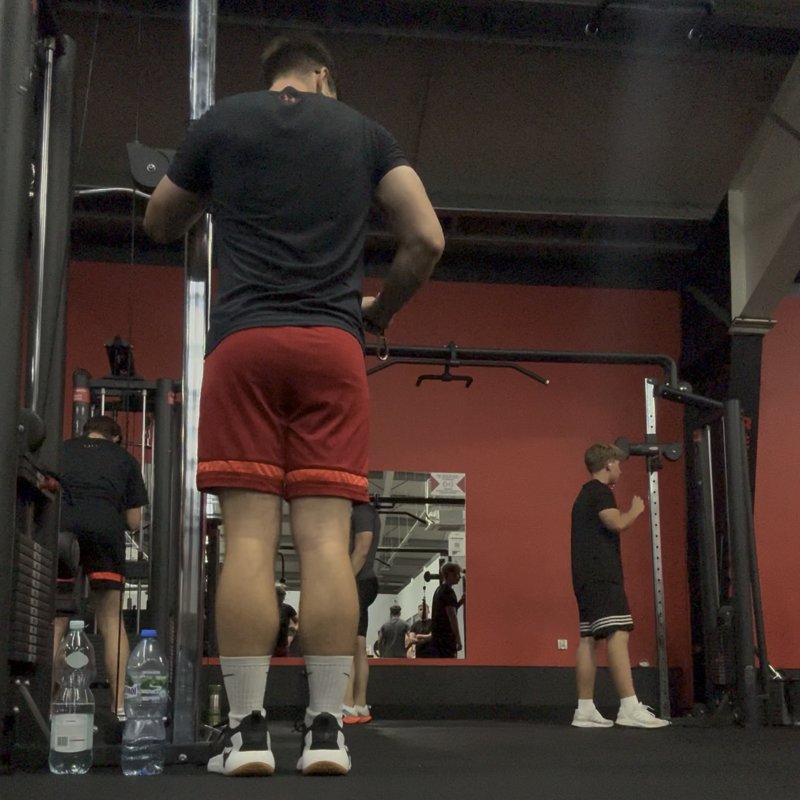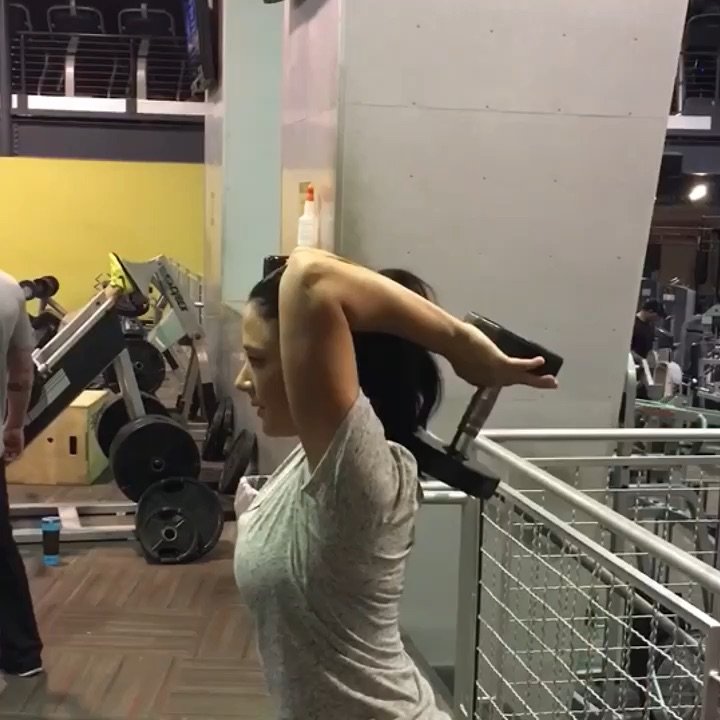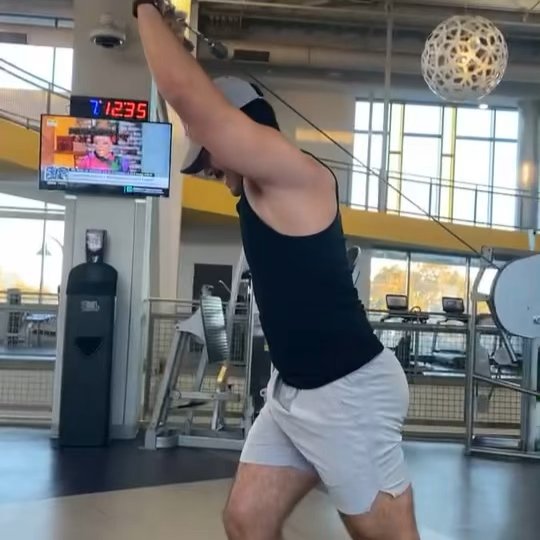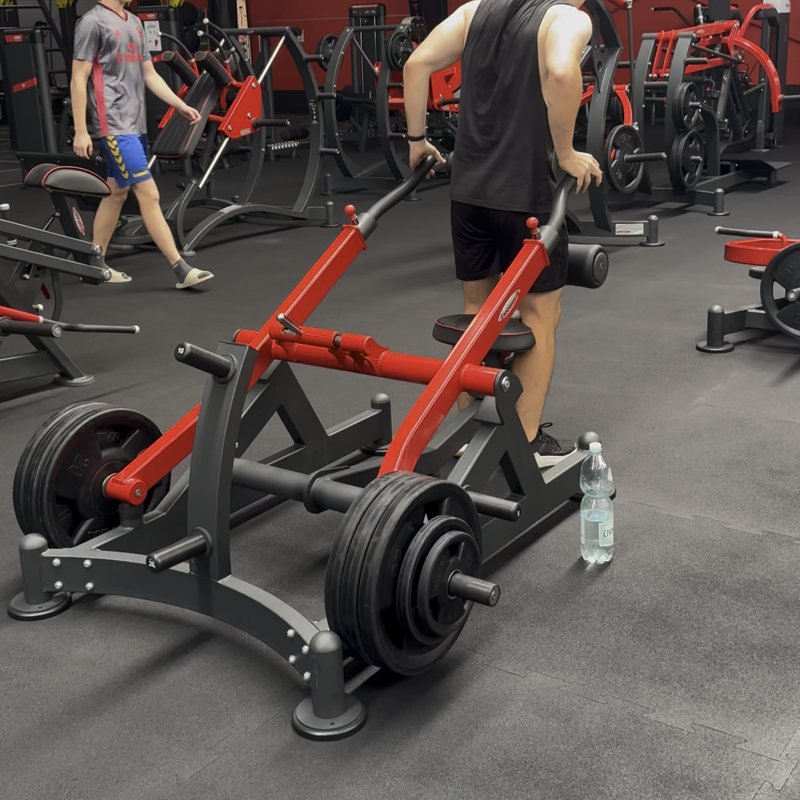Pushdown: The Ultimate Guide
The tricep pushdown is a foundational isolation exercise for developing the triceps muscles. This guide covers proper technique, variations, and programming strategies to help you build stronger, more defined arms.

Quick Facts
Key Benefit
Isolates and strengthens the triceps while minimizing stress on the shoulder joints
Primary Muscles
Triceps
Secondary Muscles
Anterior Deltoids, Forearms
Equipment
Cable Machine
Difficulty
Beginner
Type
Isolation, Hypertrophy
In This Guide
Ready to master the Pushdown?
Track your progress, see improvements over time, and build strength consistently.
Download GravitusThe Tricep Pushdown is one of the most effective and popular exercises for developing the triceps muscles. This cable-based movement isolates the triceps brachii—the three-headed muscle that makes up about two-thirds of your upper arm's mass—making it an essential exercise for both aesthetic arm development and improved pressing strength. Unlike compound pressing movements that work the triceps along with the chest and shoulders, the pushdown isolates the triceps directly, allowing for focused development with minimal shoulder joint stress. This makes it suitable for nearly all fitness levels and an excellent choice for those with shoulder limitations who still want to train their arms effectively. The standard version uses a straight bar attachment, though various grip attachments can be used to slightly alter the stimulus and target different aspects of the triceps. The straight bar version tends to allow for the heaviest loading, making it particularly effective for building overall triceps strength and size. Whether you're looking to add mass to your arms, improve your lockout strength on pressing exercises, or simply achieve more defined triceps, the tricep pushdown deserves a place in your training program. This guide covers proper technique, common mistakes to avoid, effective variations, and programming strategies to help you maximize your results.
Why the Tricep Pushdown Is Worth Mastering
The tricep pushdown offers several unique benefits that make it an essential exercise for arm development:
Direct Triceps Isolation
Specifically targets the triceps with minimal involvement from other muscle groups, allowing for focused development of all three triceps heads.
Joint-Friendly Training
Places minimal stress on the shoulder joint while effectively training the triceps, making it suitable for those with shoulder issues or as a rehabilitation exercise.
Constant Tension
The cable mechanism provides consistent resistance throughout the entire range of motion, unlike free weights that vary in resistance due to leverage and gravity.
Proper Tricep Pushdown Form: Step-by-Step
Setup
- Attach a straight bar (or your preferred attachment) to a cable machine at a high pulley position.
- Set an appropriate weight that allows for controlled movement with proper form.
- Stand facing the cable machine with feet shoulder-width apart, maintaining an athletic stance.
- Grasp the bar with an overhand grip (palms facing down), hands positioned about shoulder-width apart.
- Pull the bar down to bring your upper arms parallel to the floor, tucked close to your torso.
- Lean slightly forward from the hips while maintaining a neutral spine and engaged core.
The Movement
- Keeping your upper arms stationary against your sides, exhale as you push the bar downward by extending your elbows.
- Continue the downward movement until your arms are fully extended (though not forcefully locked out).
- Squeeze your triceps at the bottom position, focusing on maximum contraction.
- Hold this contracted position briefly (about 1 second) to maximize triceps engagement.
- Inhale as you slowly return to the starting position with control, allowing your elbows to bend until they reach approximately 90 degrees.
- Maintain tension on the triceps throughout the movement, never allowing the weight stack to rest between repetitions.
Key Form Tips
Upper Arm Position
Keep your upper arms pinned to your sides throughout the entire movement.
Wrist Alignment
Maintain straight wrists, avoiding flexion or extension that can lead to strain.
Elbow Movement
Only your forearms should move—the elbows are the pivot point and should remain stationary.
Controlled Tempo
Avoid using momentum; focus on a controlled 1-2 second lowering phase.
Torso Stability
Keep your torso stable and avoid swinging your body to assist the movement.
Full Extension
Achieve full triceps extension at the bottom without forcefully locking out your elbows.
Muscles Worked in the Tricep Pushdown
Primary Muscles
- triceps: The three-headed muscle on the back of the upper arm, with the lateral (outer) and medial (middle) heads receiving greater emphasis during pushdowns, while the long head is also activated but to a lesser degree than in overhead exercises.
Secondary Muscles
- anconeus: A small muscle near the elbow that assists with elbow extension and stabilization.
- forearms: The muscles of the forearm are engaged for gripping the bar and stabilizing the wrist during the movement.
- anterior deltoids: The front shoulder muscle contributes minimally as a stabilizer when proper form is maintained.
Common Mistakes and How to Avoid Them
Moving the upper arms
Allowing elbows to flare away from your sides turns this isolation exercise into a less effective movement. Keep your upper arms locked against your torso throughout the entire exercise, creating movement only at the elbow joint.
Using excessive weight
Going too heavy typically leads to compensatory movements like leaning back or using momentum. Select a weight that allows you to maintain strict form while still challenging your triceps through the full range of motion.
Incomplete range of motion
Not allowing the elbows to flex sufficiently at the top or not fully extending at the bottom reduces effectiveness. Start with your elbows at approximately 90 degrees and extend fully (without forcefully locking) at the bottom.
Wrist flexion/extension
Allowing your wrists to bend during the movement can lead to wrist strain and reduces force transfer to the triceps. Keep your wrists neutral and aligned with your forearms throughout the entire exercise.
Tricep Pushdown Variations
Attachment Variations
-
Rope Pushdown
Using a rope attachment allows your hands to separate at the bottom, creating an external rotation that can enhance the peak contraction.
-
V-Bar Pushdown
A V-shaped attachment places your hands in a neutral position (palms facing each other), which can be more comfortable for those with wrist or elbow issues.
-

Single-Arm Pushdown
Performing the movement one arm at a time allows greater focus on each individual triceps and can help address strength imbalances.
Grip Variations
-

Reverse Grip Pushdown
Using an underhand grip (palms facing up) shifts more emphasis to the medial head of the triceps and can be easier on the wrists for some individuals.
-

Close-Grip Pushdown
Placing hands closer together on the straight bar can increase overall triceps activation and particularly target the lateral head.
-

Split-Stance Pushdown
Taking a staggered stance with one foot forward provides more stability and can help minimize excessive body movement during heavier sets.
FAQs About the Tricep Pushdown
There is no single "best" attachment—each offers slightly different benefits. The straight bar typically allows for the heaviest loading and broad triceps activation. The rope attachment enables a greater range of motion and enhanced peak contraction through the outward rotation at the bottom. The V-bar provides a neutral grip position that's often more comfortable for those with wrist or elbow issues. For optimal development, consider rotating between different attachments periodically to provide varied stimulation to the triceps from slightly different angles and grip positions.
For general strength and muscle building purposes, it's typically best to perform compound exercises like bench press, overhead press, or dips before isolation movements like the tricep pushdown. This allows you to put maximum energy into the compound lifts which have greater overall muscle-building potential. However, if triceps are a priority weakness, occasionally performing pushdowns first can help emphasize their development by training them when they're fresh. Another effective approach is to use pre-exhaustion, performing a light set of pushdowns before pressing exercises to enhance mind-muscle connection with the triceps during those movements.
To minimize elbow discomfort during pushdowns, first ensure your form is correct—keep movement smooth without jerking, maintain proper elbow position, and avoid fully locking out your elbows at the bottom. Second, experiment with different attachments; many find the V-bar or rope less stressful on the elbows than the straight bar. Third, monitor volume and frequency—excessive training can lead to tendon irritation. Fourth, consider incorporating exercises that strengthen the antagonist muscles (biceps) to create balance around the elbow joint. Finally, warming up thoroughly with light weights and incorporating appropriate recovery measures like proper hydration and occasional deload weeks can help prevent elbow issues.
Video Demonstrations
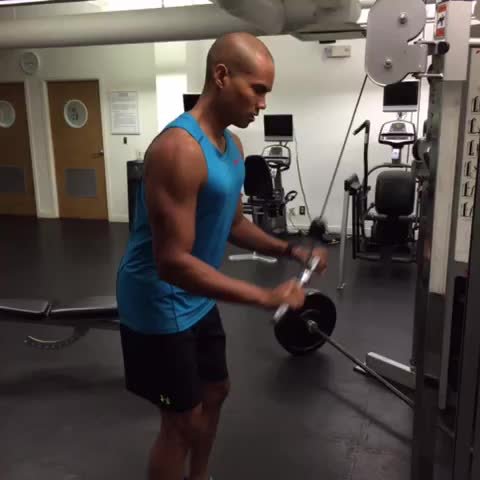
Log in to watch video demonstrations
Login to Watch3 video demonstrations available
Find more video demonstrations in the Gravitus app
Tips from the Community
-

Remember, palms down and knees slightly bent.
-

Use V-bar. On adjustable cable machine set it high. Take a step back. Slight bend in knees. Arch back. Elbows down in front of hips. Palms down(no difference for tricep. Palms down is more comfort and better power). Push straight down and breathe out. Come back up to about 90° and that is one repetition.
-

Handles do not have any relevance to the tricep (to my knowledge) because triceps do not rotate your forearm. Use the handle that is most comfortable for your grip
-

Great exercise! One of the better more practical tricep exercises out there! I’ve found most success with a straight bar or one with a slight curl
Track your progress with Gravitus
Download Gravitus to log your workouts, track your progress, and join a community of fitness enthusiasts.

Helpful Resources
One Rep Max Calculator
Find your one rep max for any exercise without maximal testing. Essential for developing effective strength training programs.
Calculate 1RMWorkout Programs
Follow structured workout programs created by fitness professionals to maximize your strength and muscle gains.
View Programs